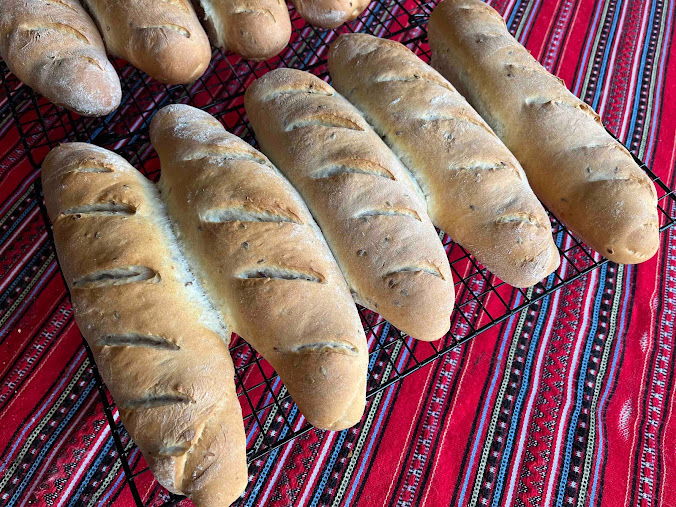'Subs'....or whatever you call them?
Welcome to another step-by-step recipe from BreadClub20. Why not drop by our main Facebook page by clicking here.... If you like what you see and enjoy the recipe, we hope you go on to join us by 'Liking' and 'Subscribing'.
In 1965, the first Subway outlet opened in Bridgeport, Connecticut. The first UK 'Subway' outlet arrived in Brighton in 1996. Today, there are 41,600 outlets worldwide. It's the 4th largest fast food outlet after McDonalds, Starbucks and KFC. Interestingly, the Subway that is credited with being the 'most remote' is in Utqiagvik, Alaska...unless, of course, you live there!
INGREDIENTS
200 gms of sourdough starter (you can use recently fed or unfed for this recipe... there's lots of bacteria and yeasts ready for action in both forms)
1000 gms of strong bread flour (you can mix your flours if you wish....wholemeal, spelt, khorasan, T55, strong white....it's a good way of using up half packets...just make sure you use at least 400 gms of strong white per mix)
500 mls of filtered water
20 gms sea salt
2 tablespoon of demerara sugar
100 gms unsalted butter (there's enough salt without adding more in the butter. If you've only got salted butter, cut back on the sea salt a little)
14 gms yeast (DON'T FORGET THE YEAST)
I'm also adding2 tablespoon of chia seeds. These are optional, you can add different / more seeds or don't bother at all.
METHOD
If you're mixing by hand or using a stand mixer, add the softened butter and the salt to the flour and mix thoroughly. Then add the remainder of the dry ingredients (except the yeast). Slowly add the liquid, the discard and then the yeast until you have a sticky mix. Turn the mix out onto a floured board and knead until you have a silky and pliable dough. (There are 'Help' videos and articles in the 'Useful Web and YouTube links' on the left hand side of this page). Place the dough in an oiled bowl and cover. Leave for an hour somewhere warm until the dough has doubled in size.
1. Prepare a baking tray and line it with either silicone, or baking paper or grease / flour it well.
2. Tip the dough out onto a floured worktop and knock it back. By now it will have already had a first proof. Divide it into half.
4. Roll the dough pieces into rolls. Leave them to rest for 10 minutes.
5. Take each roll and gently flatten into an oval. Mold into a tube shape and gently stretch and roll until it's the required length. Place on a baking tray, side by side. If you want soft sides, batch bake them by laying them close enough to each other that they touch as they expand during the second proof.
6. Cover and place somewhere warm for approximately 40 minutes.
7. Preheat the oven to 200⁰C.
8. Dust the tops of the rolls with flour and score four or so times across the bread at 45⁰
9. Bake for 15 - 20 minutes until golden
10. Remove from the tray and cool on a rack.
Remember, you can freeze these rolls very successfully. Just allow them to thaw and they're as soft as when you started.
Happy baking....
















Comments
Post a Comment